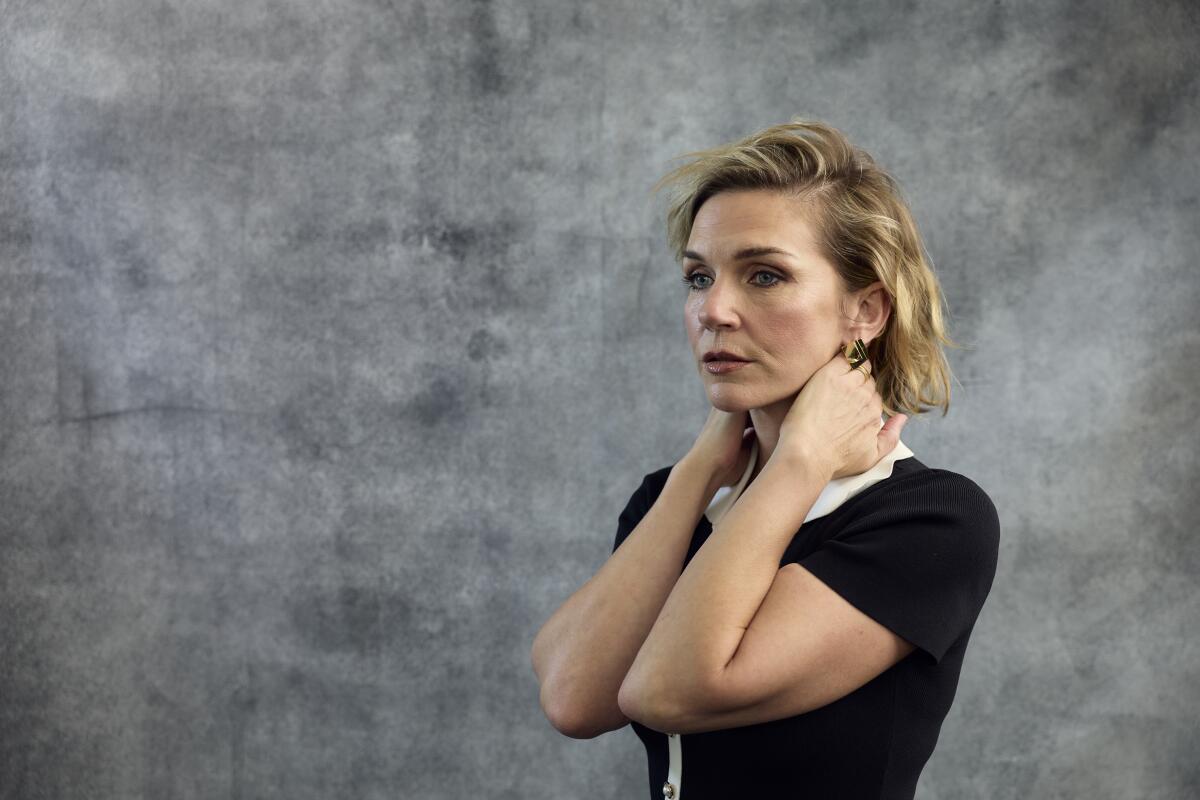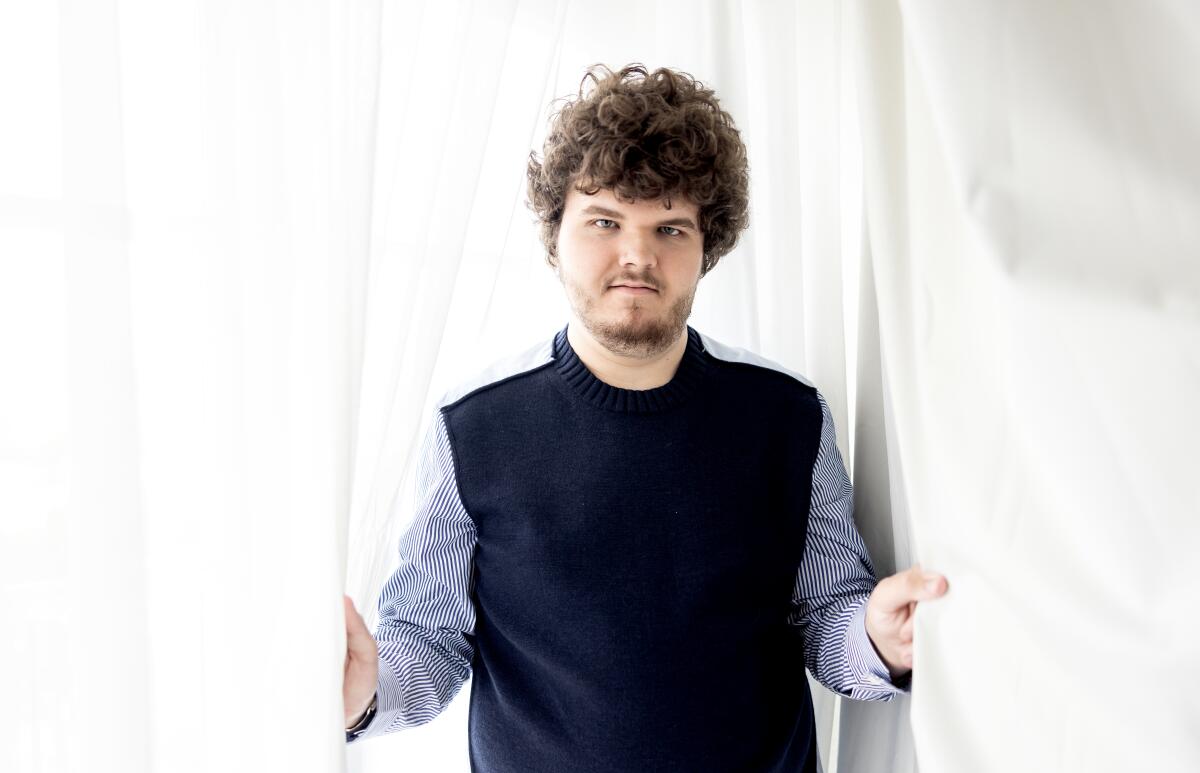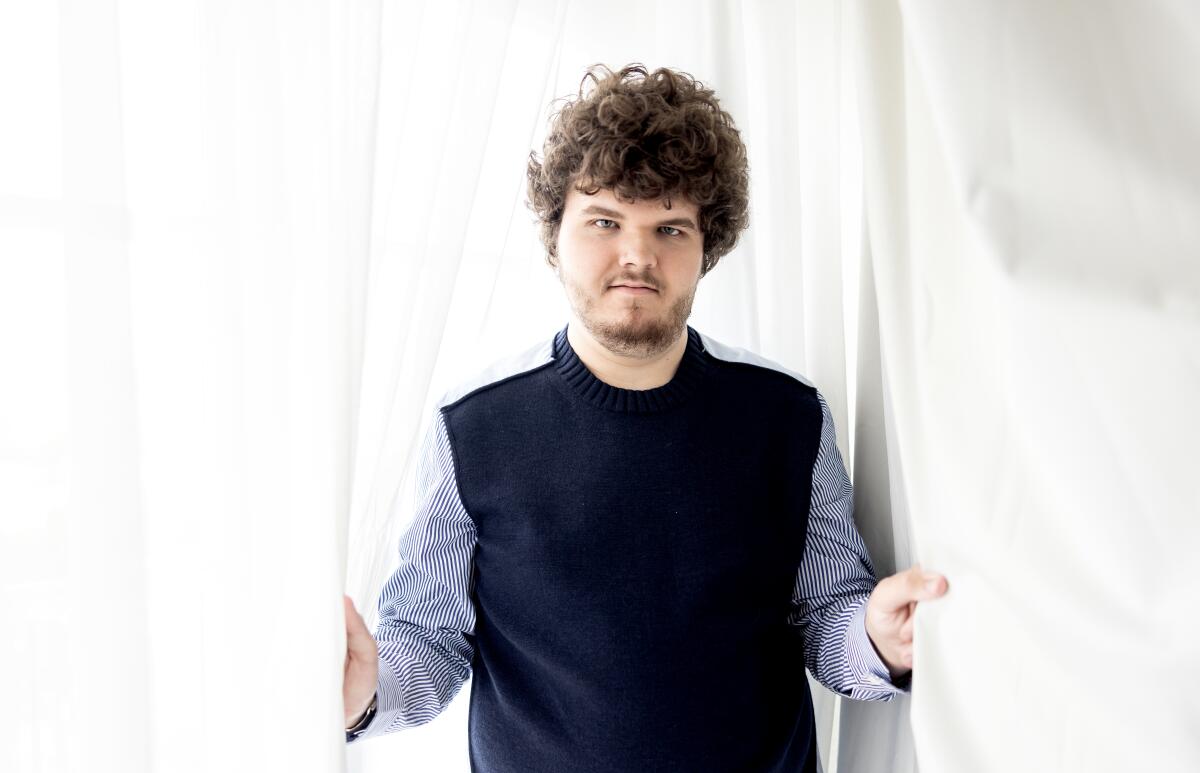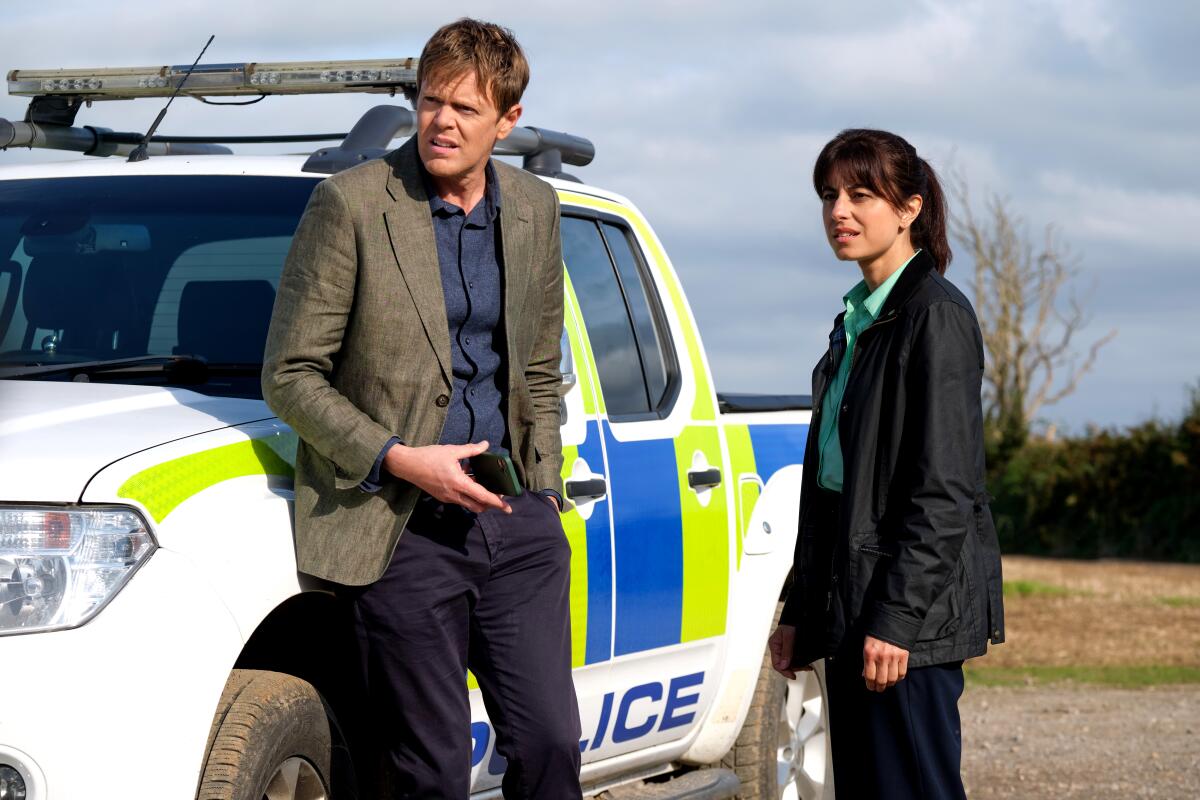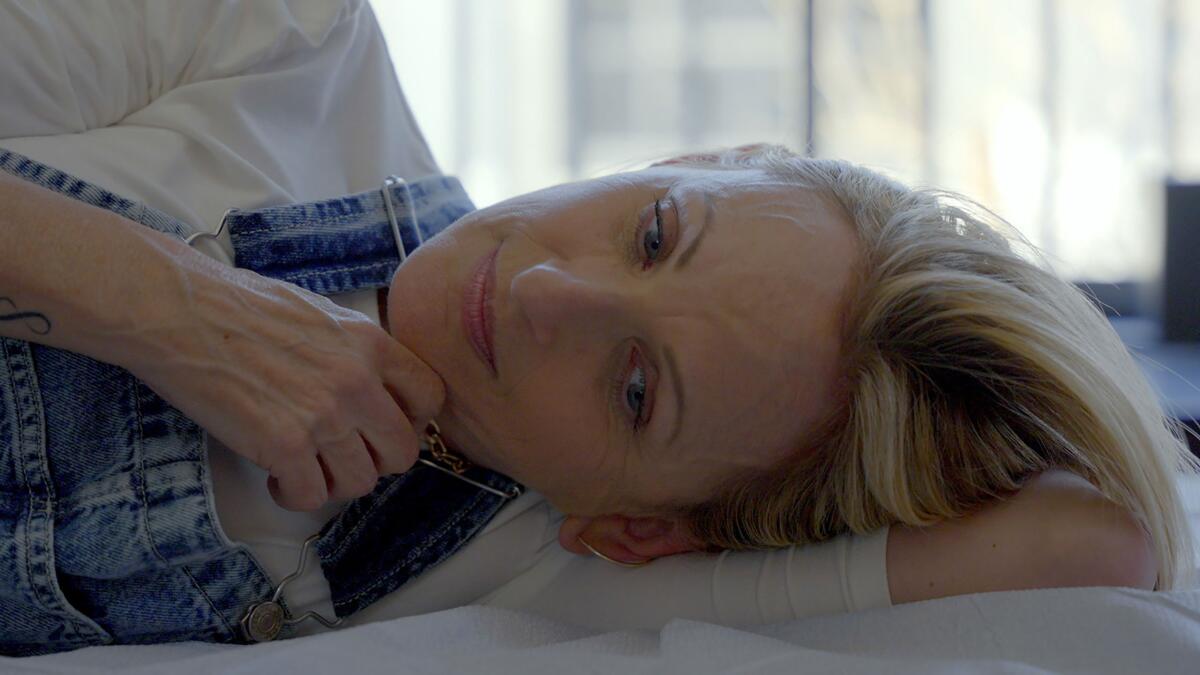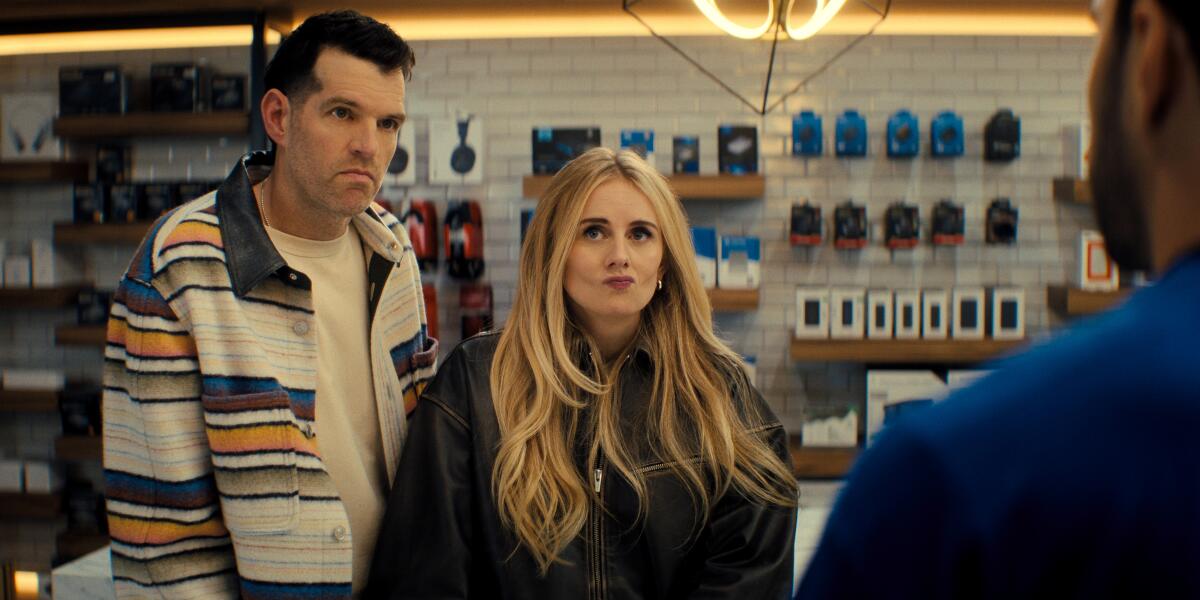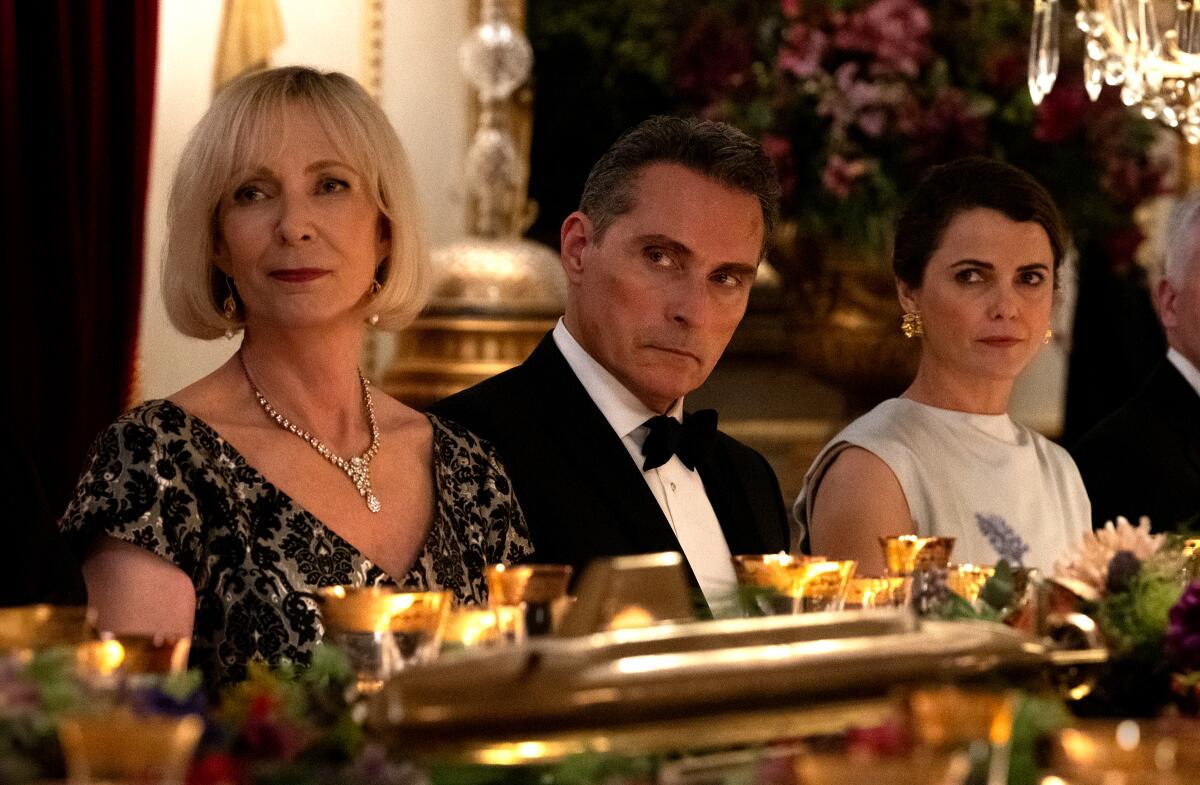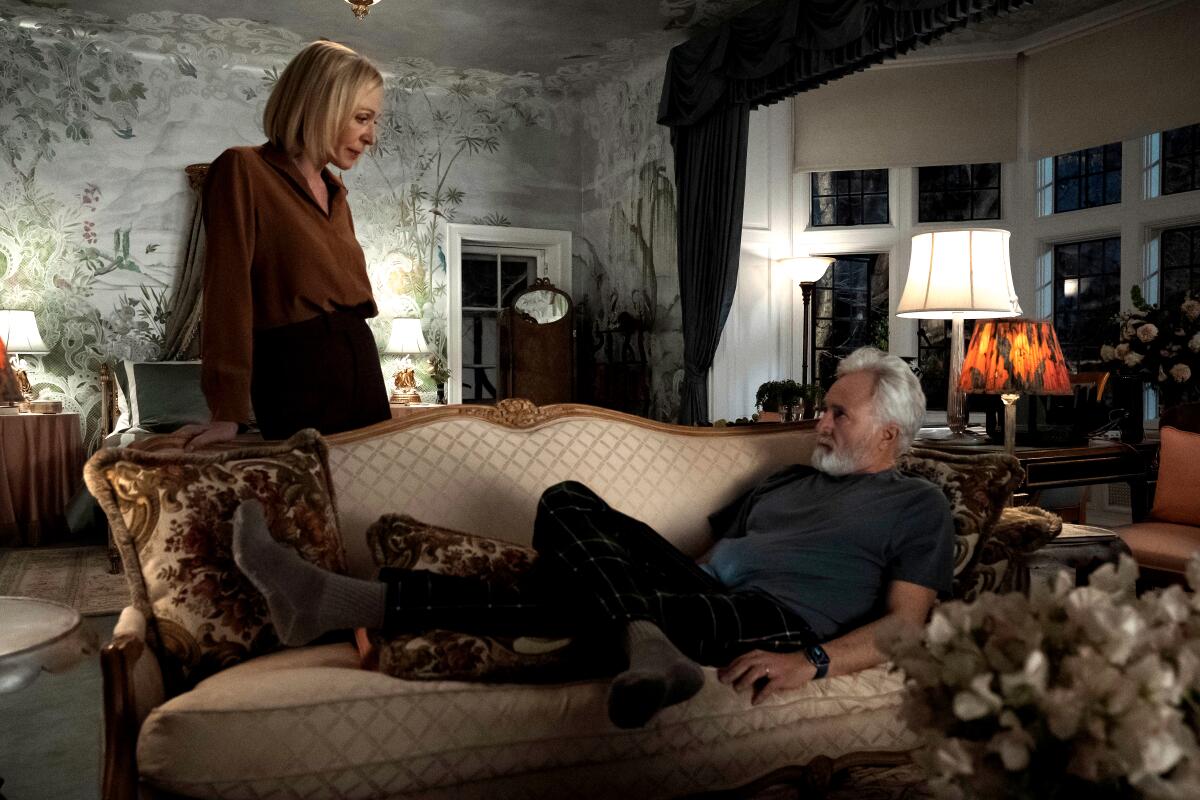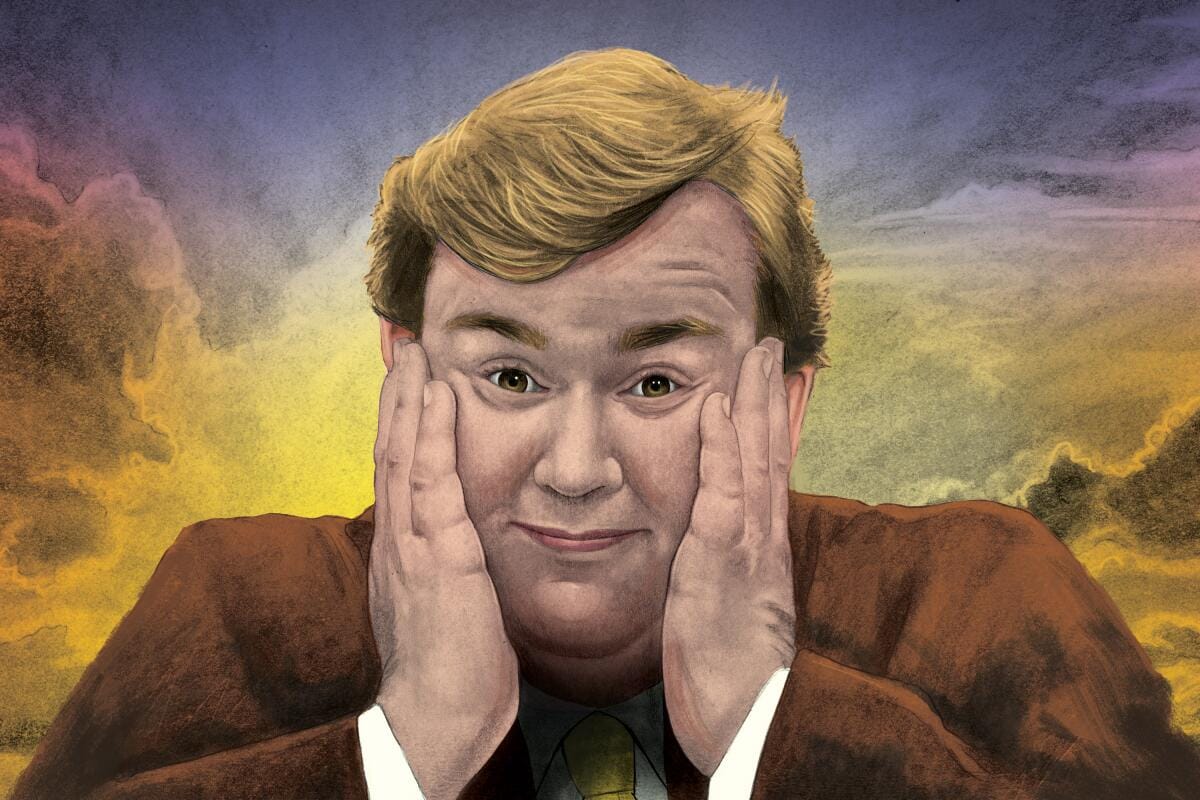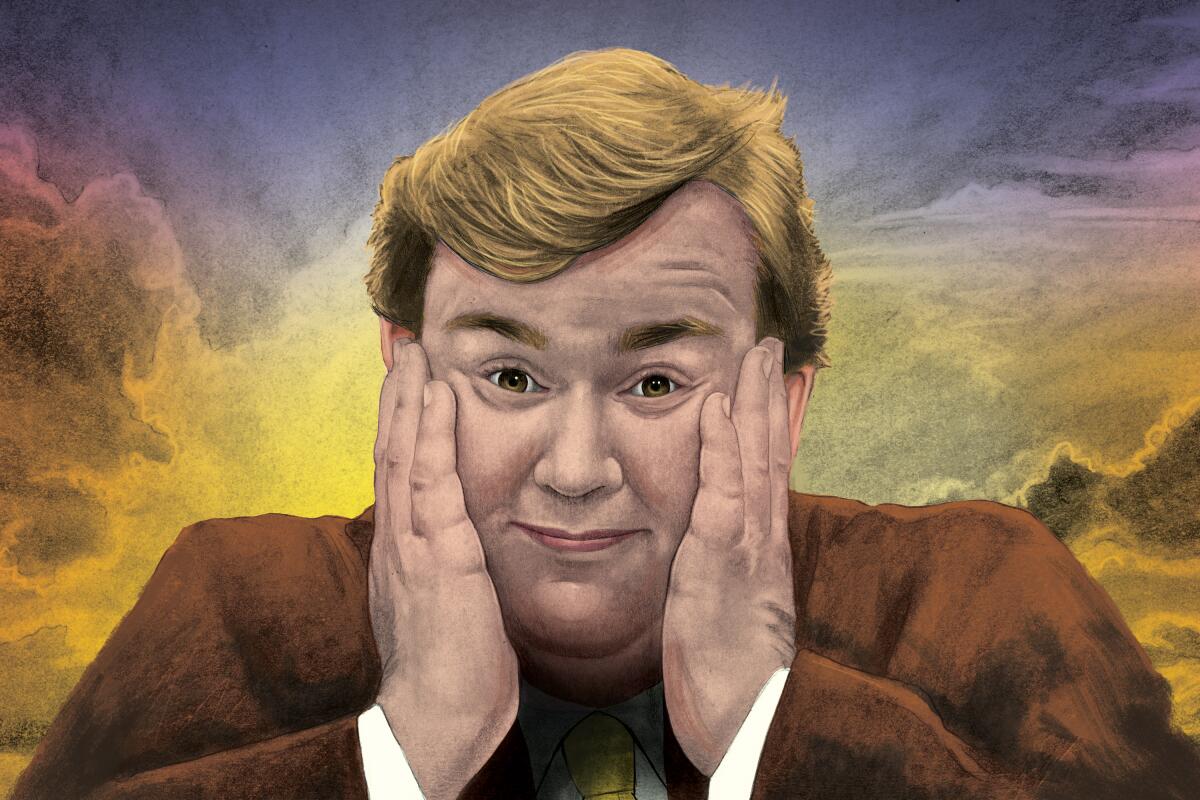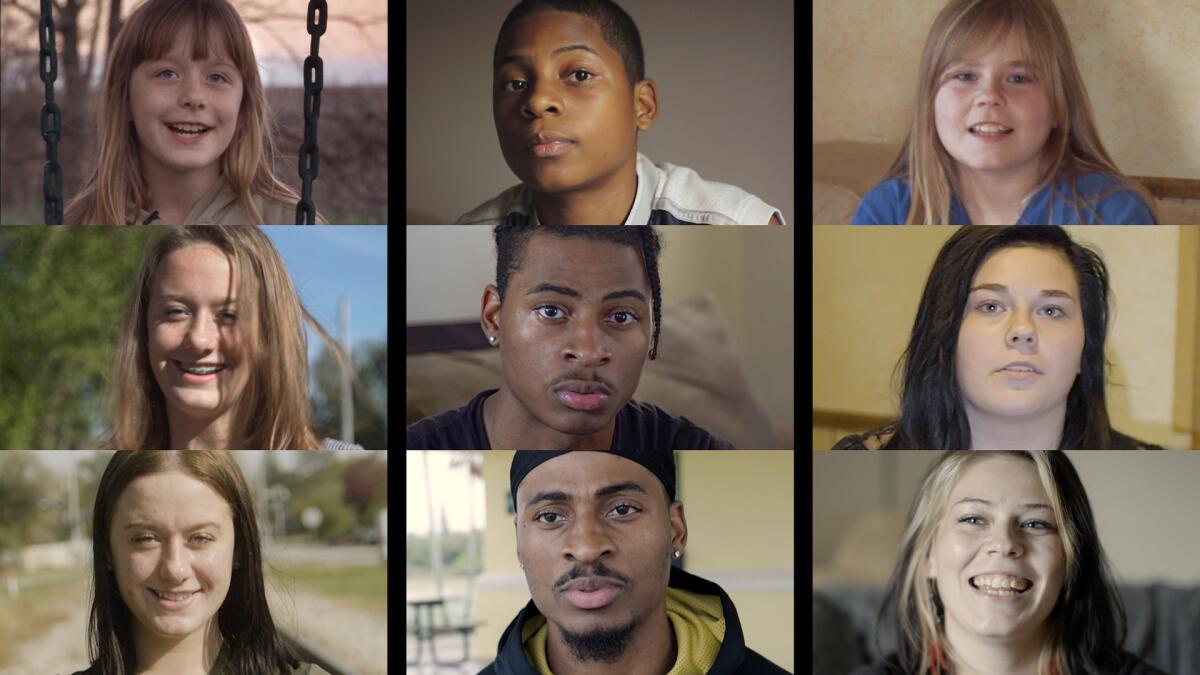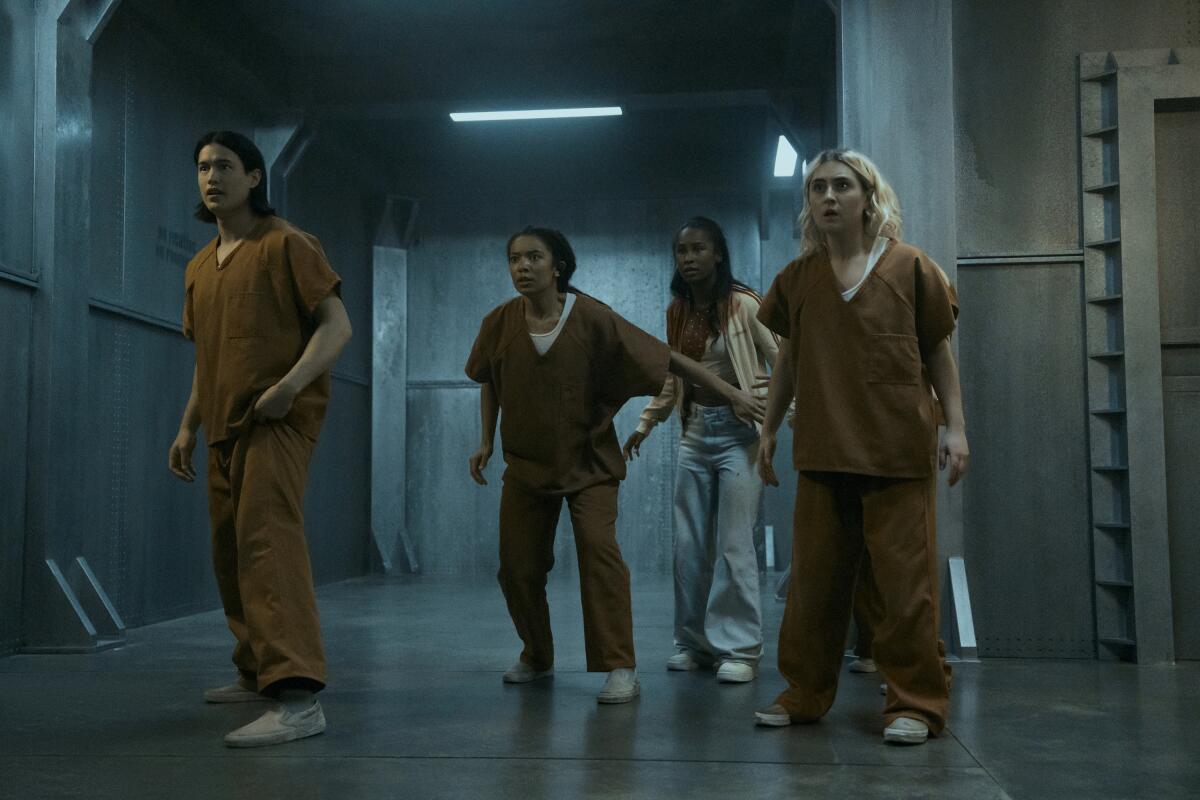For Jovan Adepo, horrors in ‘It: Welcome to Derry’ go beyond monsters
Welcome to Screen Gab, the spooky newsletter for everyone who loves scares, thrills, tricks and treats.
Happy Halloween! Whether you plan to stay home or don a costume and hit the town, at some point this weekend, it’s worth putting on a movie or show to fit the theme of the season. The great thing is that there’s something for everyone, as our guide to Halloween programming shows. Whether you prefer something kid-friendly like “Is It Cake? Halloween” or something more sinister like the newly released HBO series “It: Welcome to Derry,” which expands Stephen King’s horror universe (more on that below), there’s plenty to choose from. And if you‘re in L.A., film editor Joshua Rothkopf and reporter Mark Olsen have compiled a guide to local theaters hosting screenings of classic horror films like “Black Sabbath” and “Bride of Frankenstein.” (If you can’t snag a ticket, their list also doubles as a great reference for films to watch at home, as many are available to stream.)
If that’s not enough, we have more recommendations that you can add to your queue, including a special episode of a (sadly) recently canceled Apple TV series and the pair of “It” films that led to the creation of “Welcome to Derry.” Additionally, Jovan Adepo, who plays Leroy Hanlon on the prequel series, which dropped its second episode on HBO Max in time for Halloween, spoke to us about some of the real-life themes of horror the show covers.
ICYMI
Must-read stories you might have missed
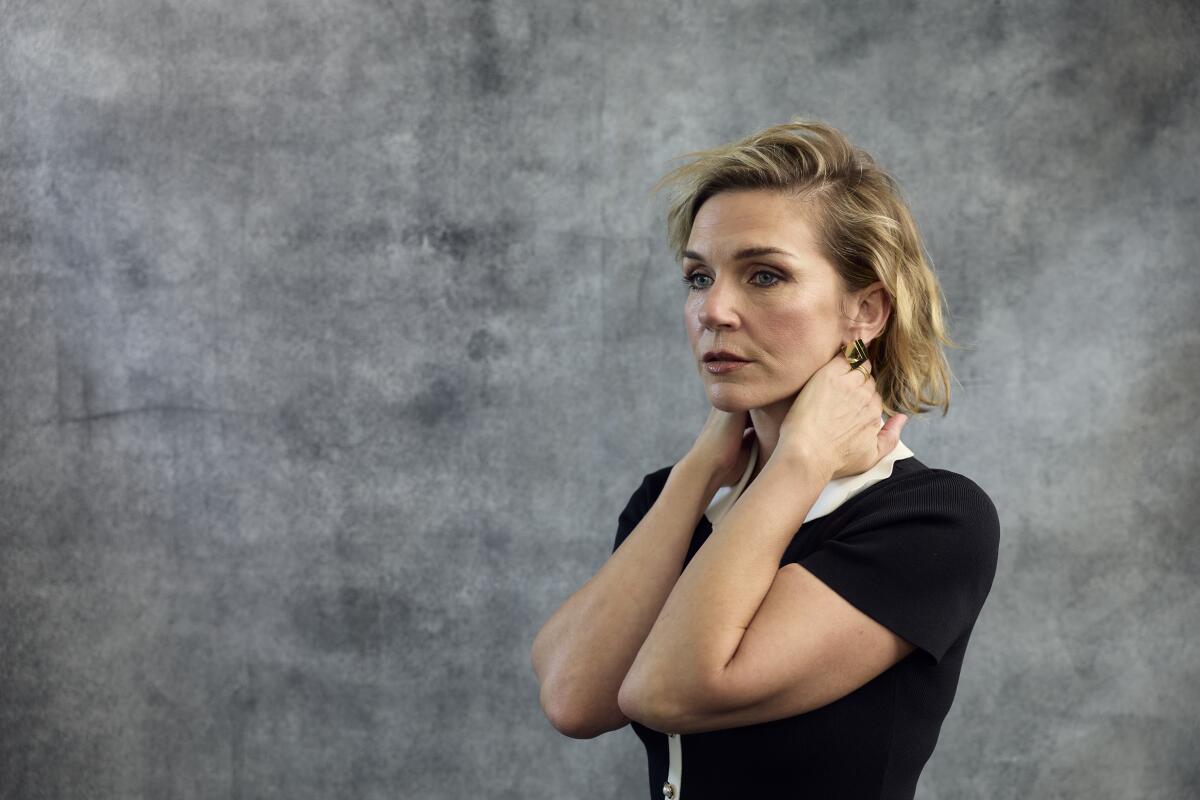
Rhea Seehorn stars in the new Apple TV series “Pluribus.”
(Anthony Avellano / For The Times)
To lead his next show, Vince Gilligan thought: Better call Rhea Seehorn: In his first series outside the “Breaking Bad” universe, Gilligan tapped Seehorn to play “the most miserable person on Earth” as the lead of Apple TV’s “Pluribus.”
In Rachel Sennott’s ‘I Love L.A.,’ Gen Z is desperate and difficult but very watchable: HBO’s new series about 20-somethings living in L.A. has some characters that are more trying than charming, but that’s part of its appeal.
Forget ‘I’m too old for this’: Women over 60 are redefining action stardom: The growing army of 60-ish women who kick ass, take names and rarely complain about getting too old for anything has been joined by Emma Thompson’s Zoë Boehm in “Down Cemetery Road” and the menopausal punk rockers of “Riot Women.”
Inside the ‘wild and weird’ rise of ‘KPop Demon Hunters’ phenoms Huntr/x: Ejae, Audrey Nuna and Rei Ami hadn’t even met in person until the premiere of Netflix’s animated blockbuster. Now they’re taking the world by storm.
Turn on
Recommendations from the film and TV experts at The Times
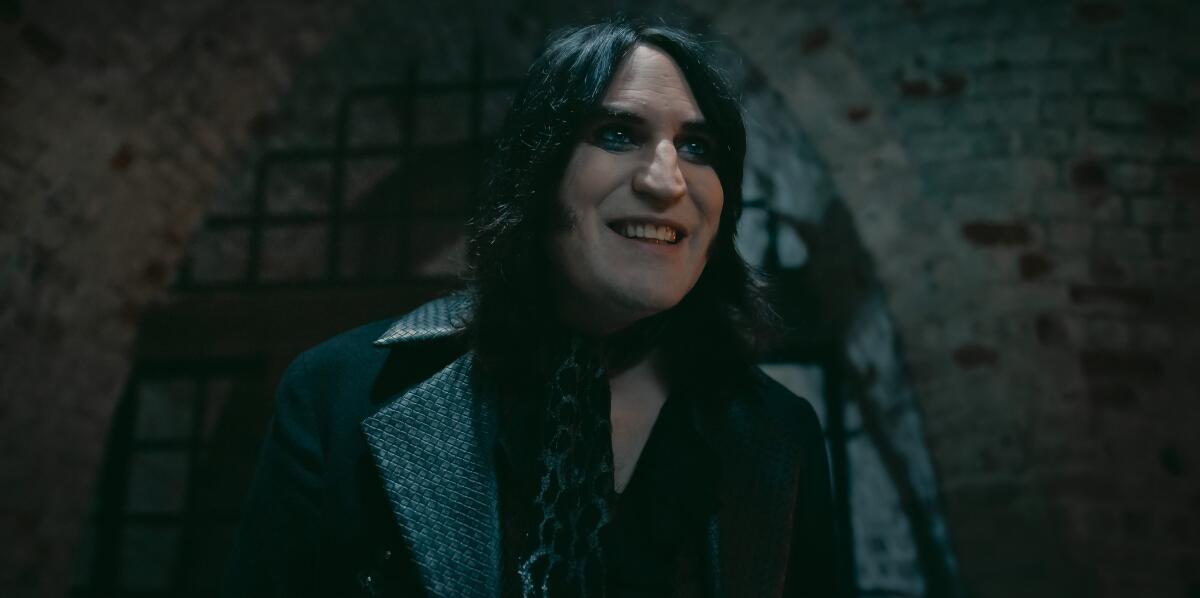
Noel Fielding in Apple TV’s “The Completely Made-Up Adventures of Dick Turpin.”
(Apple)
“The Completely Made Up Adventures of Dick Turpin: The Night of the Werebear” (Apple TV)
That this period comedy, on my best of 2024 list, failed to complete a second season is one of the great television tragedies of this year. (Star and co-creator Noel Fielding stopped showing up partway through production, reportedly due to health issues.) It has nevertheless left us this one extra, excellent, just-released Halloween-appropriate episode. A mysterious creature (see title) has been attacking coaches along the highway, leaving Dick (Fielding), the notorious English highwayman, and his motley crew without anything to rob. Although technically about a criminal, its hero is good-hearted — essentially a version of the Fielding one sees co-hosting “The Great British Baking Show” — and its approach to monsters trends more to understanding than horror. (A recommendation in itself.) Continuing in the All Hallows Eve spirit, you’ll find more paranormal doings in the series’ still-available first season, including witches, warlocks and a cursed coach. And you may want to carry on (and should) to its equally fine twin sister, “Renegade Nell” (Disney+) — another period supernatural comedy about an early 18th century highwayman (or woman, as the case may be), which adds a feminist twist. — Robert Lloyd

Bill Skarsgård as Pennywise in “It: Chapter Two.”
(Brooke Palmer/Warner Bros. Pictures)
“It” and “It: Chapter Two” (HBO Max)
The Halloween season is in full swing, and there are few things more terrifying than a demonic clown with a red balloon. HBO has just launched “It: Welcome to Derry,” the prequel to “It” and “It: Chapter Two,” the recent hit film adaptations of Stephen King’s 1986 epic novel featuring Pennywise, the deadly clown who preys on children and adults. Co-created by Andy Muschietti, who directed the films and directs on the series, the drama is set in the early 1960s in the fictional town of Derry, Maine, and takes on an even more nightmarish quality in delving into the origins of the notorious villain. Bill Skarsgård, who played Pennywise in the films, reprises the role in “Derry.” Before more episodes are released, viewers should get their scare on by revisiting the films or watching them for the first time. The first film is particularly chilling, and Pennywise will give you the shivers. Be afraid. — Greg Braxton
Guest spot
A weekly chat with actors, writers, directors and more about what they’re working on — and what they’re watching
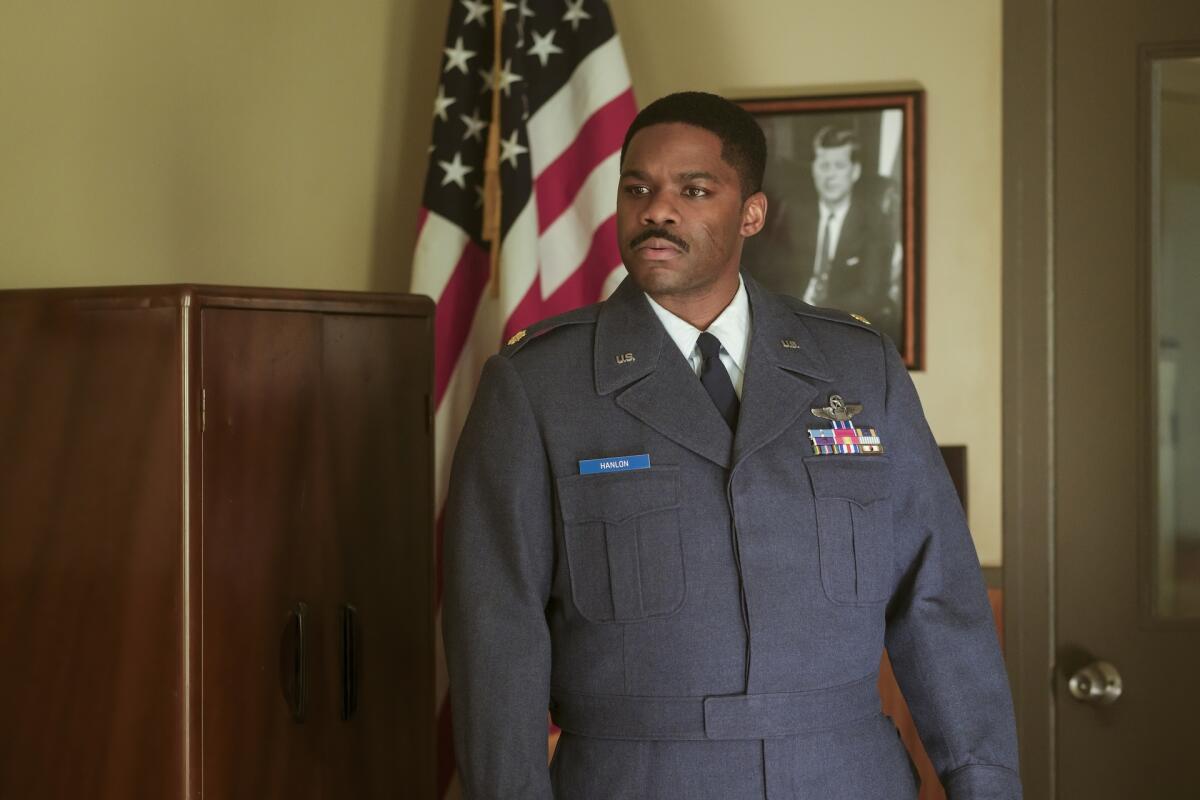
Jovan Adepo as Maj. Leroy Hanlon in HBO’s “It: Welcome to Derry.”
(Brooke Palmer / HBO)
The monster at the center of Stephen King’s “It” remains one of horror’s most terrifying figures. The author’s novel provided readers with the original tale of a group adolescents who battled a demonic clown, but it wasn’t until 1990 that we got an onscreen adaptation via the ABC miniseries that starred Tim Curry as the story’s terrifying villain, Pennywise. His devilish clown was merciless, preying on children and taunting them with bursts of blood, dead loved ones and a frightening set of sharp teeth. And while those things were scary, what made the adaptation horrifying was how it made mundane things like storm drains, old pipes and red balloons appear much more sinister.
Nearly two decades later, the feature films introduced a whole new generation to the terrors of “It,” and now with “Welcome to Derry,” we get a new story that adds more layers and aims to show who or what It really is. The HBO series, which will have a three-season arc, begins in 1962 with the story of the Hanlons, a Black military family that moves to Derry. The patriarch, Air Force Maj. Leroy Hanlon, played by Adepo, is a respected war hero who almost immediately has to battle a different kind of demon: bigotry. It’s a central theme and shows how “these horrors keep haunting us,” according to Barbara Muschietti, who alongside her brother Andy, spoke recently about the series to senior reporter Greg Braxton.
Adepo is no stranger to stories where race and bigotry are explored, having starred in series like Netflix’s “When They See Us,” a dramatization about the Central Park Five, and HBO’s “The Watchmen,” in which he played Hooded Justice. He stopped by Guest Spot this week to talk about the kinds of horrors “Welcome to Derry” portrays, what helped him unwind after filming and how he turns to a pair of TV comedies for comfort. — Maira Garcia
“It” has been adapted for the screen before. How familiar were you with King’s universe and “It” before taking on this role? Had you read the book or watched the films or miniseries?
I hadn’t read the book in the years before, but I was quite familiar with the recent two films, as well as the classic miniseries. Taking on the role of Leroy gave me a special opportunity to dive deeper into the lore and to also explore some of my own choices for how Leroy was portrayed.
“Welcome to Derry” begins by giving us some of the back story for Mike Hanlon’s family — a key character in “It.” In Episode 1, we’re introduced to your character, Leroy Hanlon, Mike’s grandfather, an Air Force major who encounters overt racism almost immediately when arriving on base in Derry. You’ve explored themes of race in previous roles — what was it like to explore it in the context of this show and the time period it’s set in, the ‘60s?
I think it’s the perfect lens through which to tell this story within the context of the era, because it adds another layer of life challenges for the Hanlons. It explores the struggle of dealing with prejudice and oppression among the members of the community, who are being tormented in a completely different way. That dynamic already creates an interesting environment that only deepens when you add the individual obstacles these characters face.
I’m compelled by an idea that this series brings forth: Monsters are terrifying, but the real world — with war, racism, genocide and so forth — is frightening enough. Did that resonate with you and your character at all?
Yes, in fact, I think that idea runs through the veins of a few characters here. I truly think this genre — and what Andy and Barb have brought to this season — beautifully showcases a very relatable experience of fear, one rooted in real historical moments and woven into a much more sensational element. Along with [co-showrunners Jason] Fuchs and [Brad Caleb] Kane, they’ve created space for viewers to connect with characters’ lives before the monster really begins to engage.
Working on such heavy material, how would you unwind after shoots?
I spent a lot of time at home recharging — watching films, exploring my neighborhood on walks with my dog, and so on. Building a routine of going shopping at the market, visiting my butcher shop, and going out to eat with my castmates was also quite relaxing. Most of us lived close to each other, so I saw everyone quite often.
What have you watched recently that you are recommending to everyone you know?
I’m a creature of habit, so on my off days I usually recharge by watching previously released shows or films. I think the last thing I brought up in conversation on set was the HBO show “Animals” [HBO Max].
What’s your go-to “comfort watch,” the movie or TV show you go back to again and again?
Oh, man. Comfort watching, to me, is something I can put on in the background after a long day on set. I’d have to give it to “Family Guy” [Hulu] or “The Office” [Peacock].
READ MORE >> ‘It: Welcome to Derry’ will satisfy fans of horror and of Stephen King’s deadly clown
